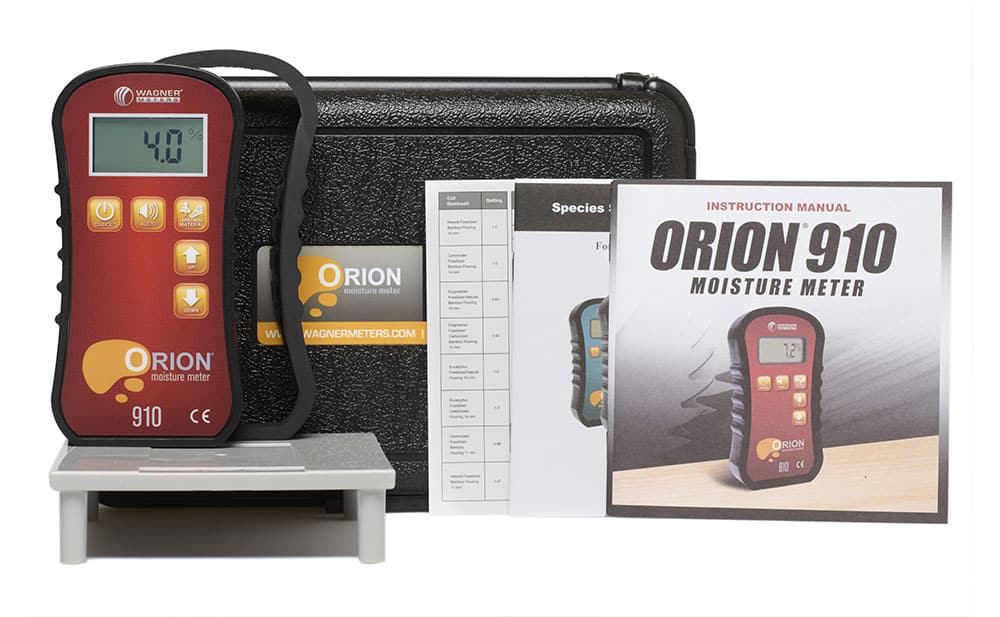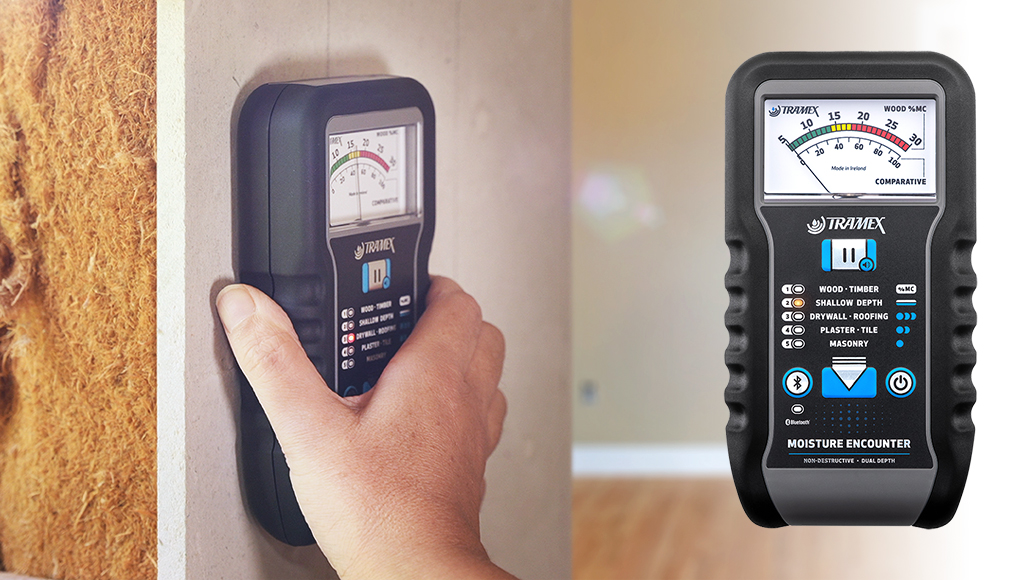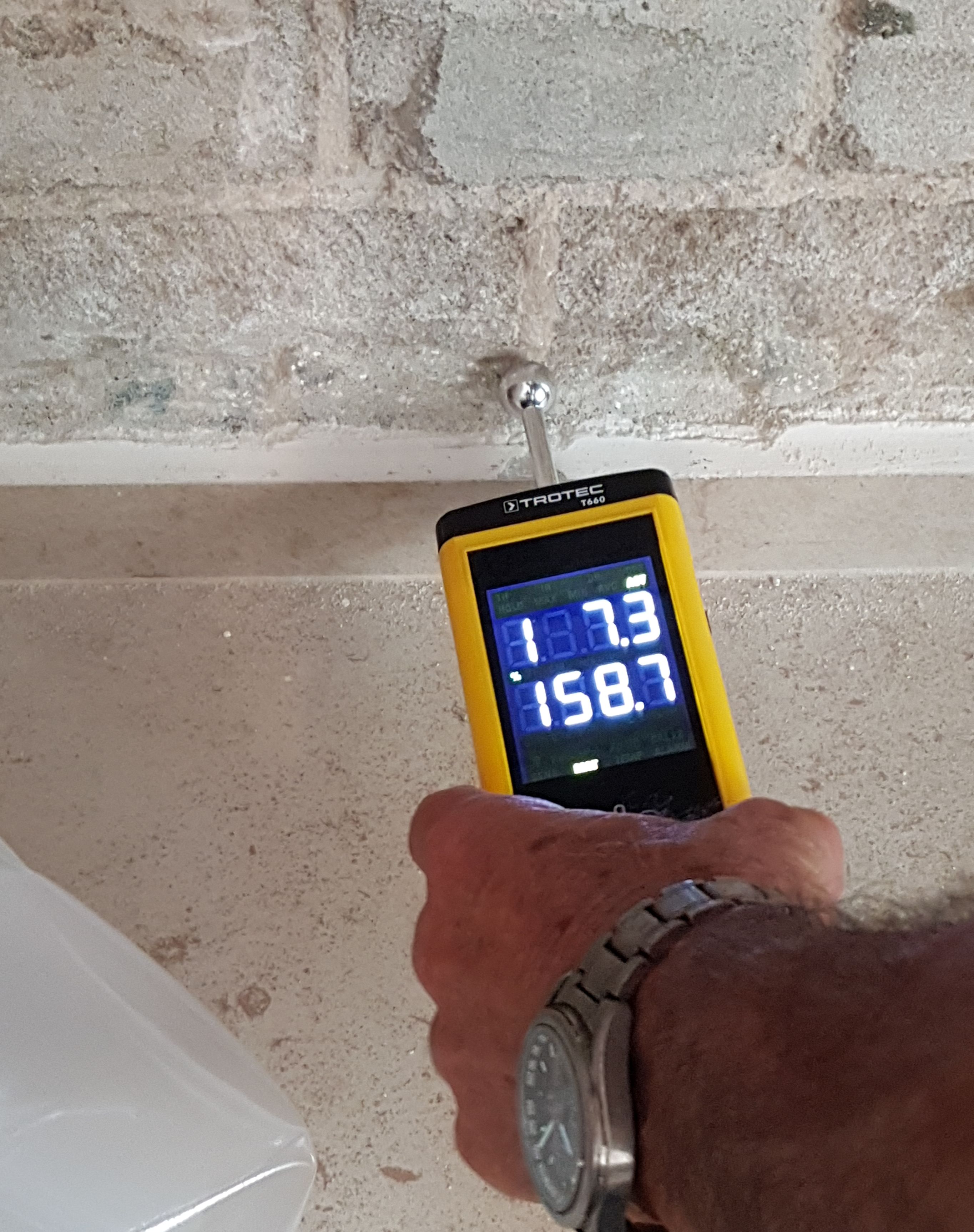Why Every House Owner Needs a Moisture Meter: Trick Advantages and Attributes
Why Every House Owner Needs a Moisture Meter: Trick Advantages and Attributes
Blog Article
Recognizing the Importance of a Wetness Meter in Stopping Mold and Water Damage in Your Home
In the realm of home maintenance, the visibility of wetness can usually be a silent yet powerful foe, qualified of triggering pervasive mold growth and perilous water damage if left uncontrolled. Comprehending the importance of a wetness meter in this battle is not simply a choice but a strategic requirement.

Importance of Dampness Discovery
Efficient moisture discovery approaches are crucial for safeguarding residential properties and avoiding prospective mold development and water damages. Dampness can leak right into various building products, bring about architectural concerns and health and wellness threats - Moisture Meter. By utilizing a wetness meter, residential property owners can proactively recognize locations prone to excess wetness, enabling timely intervention and reduction approaches
Dampness meters offer precise readings of wetness levels in different materials such as concrete, drywall, and timber. This information assists in determining areas of concern, even in surprise or hard-to-reach locations. Early detection of moisture build-up makes it possible for prompt repair work or adjustments to stop further damage.

Exactly How Dampness Meters Job
Dampness meters play an essential function in the proactive recognition of excess dampness, assisting in the prevention of potential mold growth and water damages by giving exact analyses of moisture levels in numerous structure materials. Some progressed dampness meters combine both pin and pinless innovations for thorough dampness detection. Comprehending how moisture meters function is crucial for prompt and exact dampness degree evaluations, allowing efficient precautionary procedures against mold and water damages.
Detecting Early Indication
Upon first assessment of a property, acknowledging subtle indicators of excess dampness becomes critical in the very early discovery of possible mold and mildew growth and water damage. Some common very early indication consist of stuffy smells, water spots on walls or ceilings, peeling paint or wallpaper, and warped or discolored surface areas. Stuffy smells often suggest the visibility of mold or mildew, even if no visible indicators are apparent. Water discolorations can signal leakages or infiltration, while peeling off paint or wallpaper might be an outcome of dampness compromising the attachment of these materials to the surface. Deformed or stained surfaces, such as twisting floorboards or stained drywall, are clear indicators of water damages. Moisture Meter. Additionally, an increase in allergic reaction signs or respiratory system issues amongst occupants might suggest the existence of mold and mildew because of excess dampness. By quickly recognizing and dealing with these very early warning indications, homeowners can reduce the risk of considerable mold and mildew development and water damages in their properties.


Avoiding Mold And Mildew Growth
Identifying early warning indications of excess dampness within a building not only makes it possible for timely discovery of potential mold and mildew development and water damages but also offers as a proactive measure in protecting against the proliferation of mold. Source To successfully stop mold and mildew growth, it is important to attend to any look at this web-site kind of sources of dampness without delay. This can consist of repairing leaks in windows, pipelines, or roofings, making certain appropriate ventilation in wet locations like kitchen areas and bathrooms, and using dehumidifiers in high-humidity areas. Regularly checking and maintaining the home's pipes, roof covering, and rain gutters can additionally aid in stopping water breach that might lead to mold growth.
Monitoring wetness levels in locations vulnerable to dampness, such as basements and creep areas, utilizing a dampness meter can additionally help in very early discovery of raised moisture levels and prospective mold growth. By taking proactive steps to avoid excess wetness and mold growth, homeowners can safeguard their home and indoor air high quality.
Benefits of Routine Monitoring
Regular tracking of wetness degrees in a home can play a crucial role in preserving a healthy and balanced indoor atmosphere and protecting against potential mold and water damages. By routinely examining moisture levels, home owners can discover any concerns without delay and take required activities to prevent mold development and water damage.
In addition, regular surveillance permits house owners to track patterns and patterns in moisture degrees in time. By developing a baseline and tracking adjustments, individuals can recognize any kind of areas of worry or potential vulnerabilities in the home's framework. This data-driven method allows targeted treatments and upkeep efforts to attend to underlying problems before they escalate into even more substantial troubles. Eventually, the constant monitoring of dampness degrees my site equips house owners to safeguard their home, protect their health, and maintain the stability of their indoor atmosphere.
Conclusion
In verdict, using a moisture meter is crucial in stopping mold and water damages in homes. By spotting early indication of wetness, homeowners can take positive actions to stop mold and mildew growth and expensive repairs. Routine tracking with a moisture meter can assist keep a healthy indoor setting and protect the architectural integrity of the home. It is a beneficial tool for guaranteeing the safety and security and wellness of homeowners.
By making use of a dampness meter, building proprietors can proactively determine areas vulnerable to excess moisture, allowing for timely treatment and reduction techniques.
Moisture meters offer precise analyses of dampness degrees in different products such as timber, drywall, and concrete.Moisture meters play a crucial duty in the aggressive identification of excess moisture, aiding in the prevention of potential mold and mildew growth and water damage by supplying precise readings of moisture levels in numerous structure materials. Recognizing just how moisture meters function is crucial for exact and prompt dampness degree evaluations, allowing efficient precautionary procedures against mold and water damage.
Keeping an eye on wetness levels in locations susceptible to wetness, such as basements and crawl areas, utilizing a dampness meter can also aid in very early detection of elevated wetness levels and prospective mold and mildew development.
Report this page